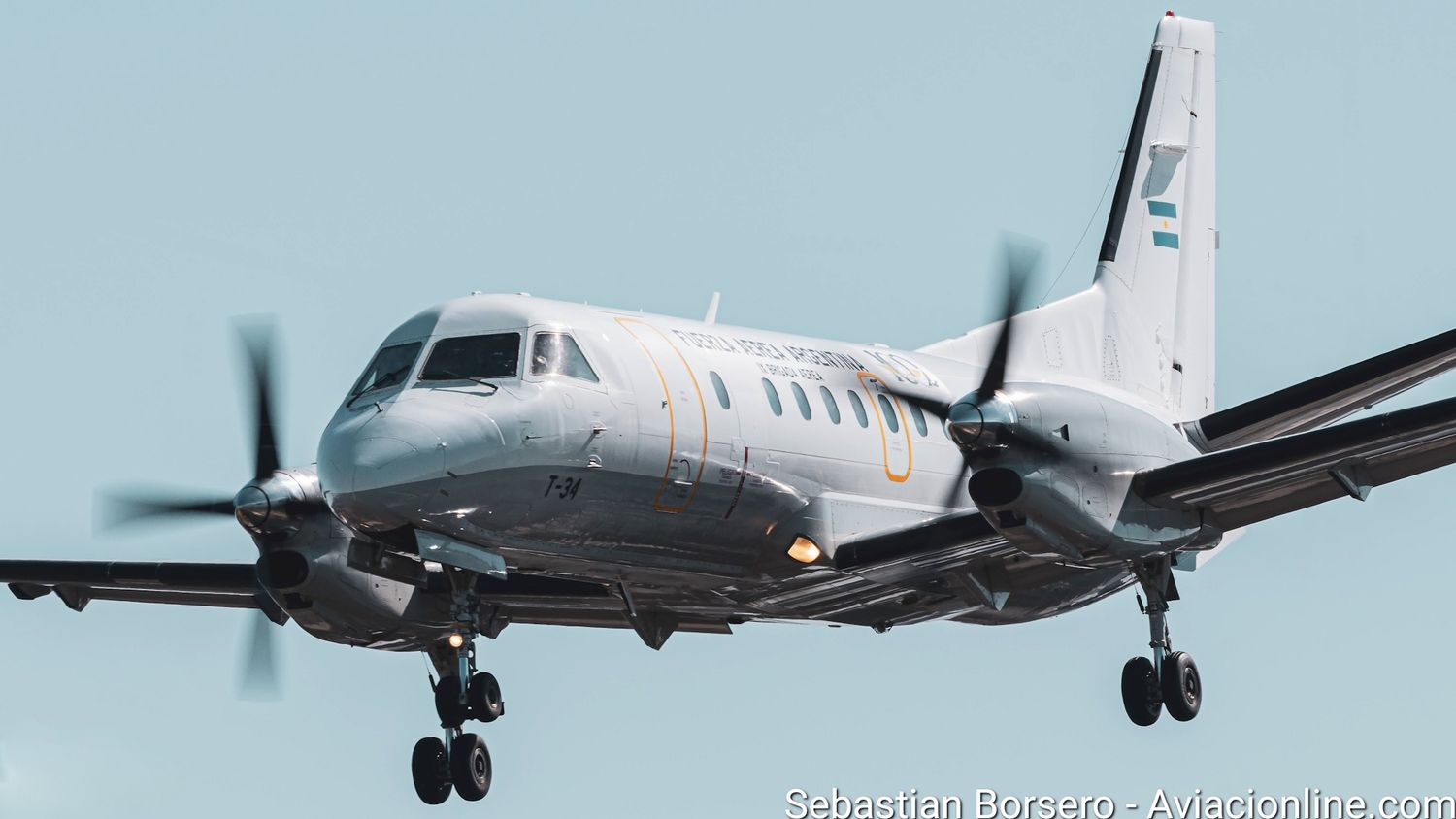LADE (Líneas Aéreas del Estado), sort of an «essential air service» airline that belongs to the Argentine Air Force, will operate between Rosario and Córdoba as part of a «milk run» flight that will originate at Jorge Newbery Aeroparque in Buenos Aires and conclude in Mendoza.
Both cities haven’t been connected by non-stop flights since 2018, and even then it was just a weekly flight by Aerolíneas Argentinas.
The route connecting the two largest Argentine cities following Buenos Aires has frequently been dubbed «impossible,» attributed to a range of factors including demographics, geography, and economics.
The inaugural flight is scheduled for September 5th, and will initially operate every two weeks on Saab 340 aircraft with a capacity for 34 passengers.
This frequency is far from truly serving the complex market between Rosario and Córdoba. However, LADE clarified that with this, they continue their objective to «promote» the air market to be later taken over by other companies.
In this regard, they mentioned the recent cases of flights between Buenos Aires and Merlo, and Buenos Aires – Rosario – Reconquista, which were also operated by LADE at low frequencies until they were transferred to Aerolíneas Argentinas in December and last June, respectively.
See also: On board the first flight to Reconquista by Aerolíneas Argentinas
The flight between Buenos Aires and Mendoza via Rosario and Córdoba will also allow, with a stop-over in Mendoza, continue to Malargüe, Neuquén, Bahía Blanca, Trelew, and Comodoro Rivadavia the following day.
The fact that the two main cities in the Argentine interior, each with about 2 million inhabitants, headquarters of significant national and international companies, and renowned universities, have not had flights between them for over five years, paints a certain picture of the characteristics of the Argentine commercial aviation market.
This market has been influenced by a high concentration of the population in a flat area without significant geographic barriers to road transportation, and a lack of sustained economic development over time (compared to the US or Europe).

They are separated by 400 kilometers of highway (248 miles), which translates to between four and six hours by land, depending on if one travels by car or bus.
Traveling by car may cost between ARS 8,000 and ARS 11,000, depending on factors like model, speed, or fuel type. And a quick search on one of the most important bus ticket aggregators reveals 43 daily departures in each direction at an average price of ARS 10,000 (ARS 365 = USD 1 at the government-controlled rate / ARS 720 = USD 1 at the free market rate). That means that bus companies offer around three thousand seats in each direction everyday, something you might expect airlines could take on. But the competition is hard.
Because, how can the plane compete when, besides possibly having higher fares, it offers less scheduling flexibility and the additional drawback of leaving passengers far from the cities downtown without proper public transportation? It could compete with a frequency that at least allows round trips on the same day to attract corporate customers (i.e., two daily flights in each direction), but these alone do not fill planes. Another market segment is also needed, either to fly only between Córdoba and Rosario or to connect to other destinations.

This is where even more variables come into play, like the concentrated population in a flat area and generally impoverished in international terms, which will always prioritize cheaper bus tickets.
On a brighter note, both Córdoba and Rosario have managed to develop and maintain, with ups and downs, a commendable level of connectivity (given the context), with direct flights to 24 and 10 cities respectively including cities abroad like Madrid, Panama, Lima and Sao Paulo. Not to mention that Rosario is also only 300 kilometers away from Buenos Aires, where the flight offer multiplies several times more.
Hopefully, LADE, following the spirit that has guided it for over 80 years, will succeed in establishing and promoting an attractive service. The Saab 340 is, on the other hand, a more suitable equipment to offer several flights a day without excess capacity and allows faster boarding and deboarding processes.
Founded in 1940, LADE primary purpose isn’t to compete with commercial airlines but to provide air connectivity to remote and underserved regions of Argentina, especially in Patagonia and other challenging terrains.
Currently, on LADE’s website, there are no fares for flights between Córdoba and Rosario. The SAAB 340 is scheduled to fly on routes connecting Comodoro Rivadavia with Río Gallegos, El Calafate, Río Grande, and Ushuaia, in Patagonia.
Unlike most airlines, LADE’s operations are not profit-driven. Over the years, the airline has played a vital role in national development, transporting cargo, mail, and passengers. It operates a fleet that includes both military and civilian aircraft: Saab 340, DHC-6 Twin Otter, and an iconic Fokker F28. You might want to check our trip report on the last one:
Although its network tends to change a lot depending on the season and the aircraft availability, these are the destinations they served by june 2023.
In its heyday, which lasted until the end of the 90s, LADE served around 30 destinations in Patagonia.
Now, LADE is poised to once again demonstrate its significance to Argentina’s commercial aviation. Given its history of achieving what seemed unattainable, the question arises: can LADE turn the ‘impossible’ into ‘possible’ yet again? Could Córdoba and Rosario finally get the air service one should expect between two major cities?




Comentarios
Para comentar, debés estar registrado
Por favor, iniciá sesión